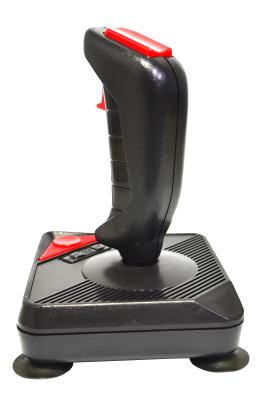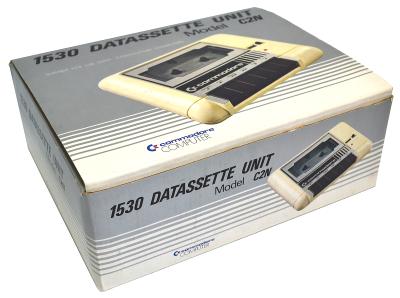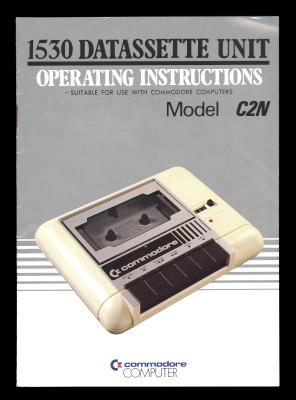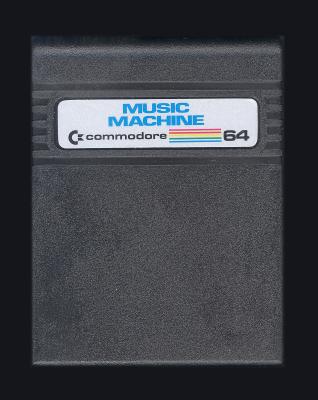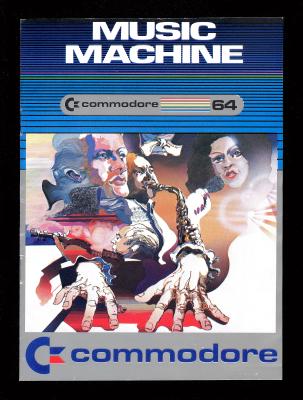1541 DISC DRIVE FOR COMMODORE 64 COMPUTER
c. 1982 - 1994Fawn, oblong box. The slot and lock/ejector mechanism for the disc is black and mounted in the front surface. Above this is a label with the TM then commodore strips of stacked rainbow colours and [1541].
The TM is moulded central and slightly toward the rear of the upper surface, before rows of cooling slots.
The back case has three ports, a fuse holder and the ON/OFF switch.
There are two stickers, one square and one rectangular, on the back with text [TM commodore / Single Drive Floppy Disc / Model 1541 / Power 240Vac 250mA 50Hz / Serial No AJ5 0086417 / Attempted repair by / unauthorised persons / voids warranty. / HWD Made in Japan / 1540030-45] and [WARNING / FOR CONTINUED PROTECTION AGAINST / FIRE, REPLACE ONLY WITH SAME TYPE / AND RATINGS OF FUSE T500mA 250V / 1010019-02].
The Commodore 64, also known as C64, was a home computer introduced in January 1982 by Commodore International. The C64 name came from its 64 kilobytes of RAM. Retailing at US$595 (equivalent to $1545 USD in 2018) and selling 17 million units worldwide during its lifetime, it was listed in the Guinness Book of World Records as being the highest-selling single computer model of all time. Between 1983 and 1986, the C64 outsold its competitors' products, IBM PC Compatibles, Apple Computers, and Atari 8-bit. This was achieved through selling at regular retail stores, rather than at electronics and computer specialist stores. Aproximately 10,000 software titles were made for the C64, including office productivity applications, development tools and video games. It was discontinued in April 1994, although it remains popular in society today with collectors and computer enthusiasts. In 2018, the C64 mini 'retro' console was announced, introducing a new generation to the wonders of the C64.
Details
Details
Commodore International
This object is part of a collection that represents the types of technology that were used on a daily basis by people who lived in worked in the City of Armadale. The collection represents how technology has influenced how people lived, worked and played within the City of Armadale. The collection also is representative of how technology evolves and can become obsolete which in turn can make pastimes, jobs and skills evolve or become obsolete.
City of Armadale - History House
City of Armadale - History House
Other items by Commodore Business Machines
- SOFTWARE PACKAGING FOR COMMODORE 64 COMPUTER
- PAMPHLET FOR SERVICE CENTRES FOR COMMODORE 64 COMPUTER
- CASSETTE FOR COMMODORE 64 COMPUTER
- COMMODORE 64 COMPUTER SOFTWARE BONUS PACK
- INSERT, PACKAGING - FOR MAGNETIC TAPES / CASSETTES
- CASSETTE FOR COMMODORE 64 COMPUTER
- PACKAGING, SOFTWARE - ROLF HARRIS PICTURE BUILDER FOR COMMODORE 64
- COMMODORE 64 MOCRO COMPUTER USER MANUAL
- COMMODORE Plus/4 COMPUTER POWER PACK
- 5¼ DISC FOR COMMODORE 64 COMPUTER
- BOX FOR COMMODORE 64 COMPUTER
- CASSETTE FOR COMMODORE 64 COMPUTER
Other items from City of Armadale - History House
- PUNCH, DISK - FOR 5 1/2'' FLOPPY DISK
- JOYSTICK DELUXE COMMODORE 64 COMPUTER
- JOYSTICK DELUXE BOX FOR C64 COMPUTER
- COMMODORE 1530 DATASSETTE UNIT
- COMMODORE 1530 DATASSETTE UNIT BOX
- COMMODORE 1530 DATASSETTE INSTRUCTION BOOK
- RECEIPT IN DATASSETTE BOX
- MUSIC MACHINE CARTRIDGE FOR COMMODORE 64 COMPUTER
- MUSIC MACHINE CARTRIDGE FOR COMMODORE 64 COMPUTER BOX
- MUSIC MACHINE GAME FOR COMMODORE 64 COMPUTER INSTRUCTION BOOK
- MUSIC COMPOSER CARTRIDGE FOR COMMODORE 64 COMPUTER
- MUSIC COMPOSER CARTRIDGE FOR COMMODORE 64 COMPUTER BOX






